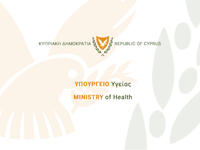Press Releases

24-06-2022 12:25
EMA recommends authorisation of Nuvaxovid for adolescents aged 12 to 17
EMA’s human medicines committee (CHMP) has recommended granting an extension of indication for the COVID-19 vaccine Nuvaxovid to include use in adolescents aged 12 to 17 years. The vaccine, developed by Novavax CZ, a.s., is already approved for use in adults aged 18 and above.
The use of the vaccine in adolescents is the same as in adults, with two injections given in a muscle, three weeks apart.
A main study including over 2,200 children aged 12 to 17 years is being carried out in accordance with the paediatric investigation plan (PIP) for the vaccine, which was agreed by EMA's Paediatric Committee (PDCO).
This trial showed that the immune response to Nuvaxovid in adolescents, which was measured as the level of antibodies against SARS-CoV-2, was comparable to the response in young adults aged 18 to 25 years (who were part of the main study used to assess effectiveness of the vaccine in adults). The trial was carried out when the SARS-CoV-2 Delta variant was dominant and showed that the vaccine was almost 80% effective at preventing COVID-19; six out of the 1,205 adolescents who received Nuvaxovid developed COVID-19 compared to 14 out of 594 who received placebo (dummy injections). The CHMP considered that these results are in line with those seen in adults.
The most common side effects in adolescents are mostly similar to those in people aged 18 and above. They include tenderness, pain, redness and swelling at the injection site, headache, muscle and joint pain, tiredness, generally feeling unwell, feeling sick or vomiting and fever. Fever is seen more frequently in adolescents than in adults. These effects are usually mild or moderate and improve within a few days of vaccination.
CHMP therefore considered that the benefits of Nuvaxovid in adolescents aged 12 to 17 outweigh its risks.
The safety and effectiveness of the vaccine in both adolescents and adults will continue to be monitored closely as the vaccine is used in vaccination campaigns across the Member States, through the EU pharmacovigilance system and ongoing and additional studies by the company and by European authorities.
How Nuvaxovid works
Nuvaxovid is given as two injections, usually into the muscle of the upper arm, 3 weeks apart. It works by preparing the body to defend itself against COVID-19. The vaccine contains a version of a protein found on the surface of SARS-CoV-2 (the spike protein), which has been produced in the laboratory. It also contains an ‘adjuvant’, a substance that helps strengthen the immune responses to the vaccine.
When a person is given the vaccine, their immune system will identify the protein as foreign and produce natural defences — antibodies and T cells — against it. If, later on, the vaccinated person comes into contact with SARS-CoV-2, the immune system will recognise the spike protein on the virus and be prepared to attack it. The antibodies and immune cells can protect against COVID-19 by working together to kill the virus, prevent its entry into the body’s cells and destroy infected cells.
Where to find more information
The product information for Nuvaxovid is approved by the CHMP and contains information for healthcare professionals, a package leaflet for members of the public and details of conditions of the vaccine’s authorisation.
An assessment report with details of EMA’s evaluation of the use of Nuvaxovid in adolescents will be published. Clinical trial data submitted by the company in the application for the paediatric extension of indication will be published on the Agency’s clinical data website in due course.
More information is available in an overview of the vaccine in lay language, including a description of the vaccine’s benefits and risks and why EMA recommended its authorisation in the EU.
Monitoring the safety of Nuvaxovid
In line with the EU’s safety monitoring plan for COVID-19 vaccines, Nuvaxovid is closely monitored and subject to several activities that apply specifically to COVID-19 vaccines. Although large numbers of people have already received COVID-19 vaccines, certain side effects may still emerge as more and more people receive the vaccine. In addition, independent studies of COVID-19 vaccines coordinated by EU authorities will give more information on the vaccine’s long-term safety and benefits in the general population.
These measures allow regulators to swiftly assess data emerging from a range of different sources and take appropriate regulatory action to protect public health if needed.
(AP)
Relevant Press Releases







